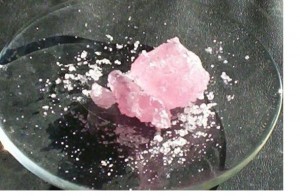SUNDAY, 20 FEBRUARY 2011
 Researchers at Virginia Commonwealth University have discovered a new class of magnetic magic cluster with the molecular composition (MnxCl2x+1)- (where x = 1, 2, 3, ...), which have a chlorine atom bound to a manganese and chlorine core [1]. These molecular species have the potential to serve as building blocks of a new class of salts with magnetic and super-oxidising properties.
Researchers at Virginia Commonwealth University have discovered a new class of magnetic magic cluster with the molecular composition (MnxCl2x+1)- (where x = 1, 2, 3, ...), which have a chlorine atom bound to a manganese and chlorine core [1]. These molecular species have the potential to serve as building blocks of a new class of salts with magnetic and super-oxidising properties.The new clusters form negative ions and mimic the chemistry of halogens such as chlorine and bromine, which means they may find use as an oxidising agent. However, because the manganese atoms carry a large magnetic moment they are also magnetic: these superhalogens can do the same thing that halogens can do, only better. In fact, due to their large electron affinity they can involve inner-core electrons of metal atoms in chemical reactions, giving rise to new chemistry.
By substituting the manganese atom with another transition metal, and the chlorine with a different halogen, the VCU chemists believe it will be possible to synthesise yet more magnetic superhalogens which could have applications in many industries.
Written by Robert Jones
